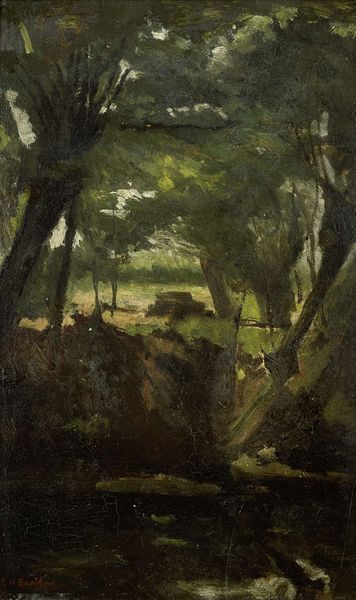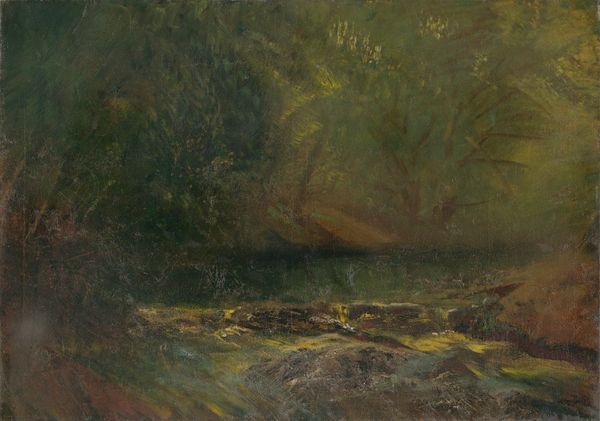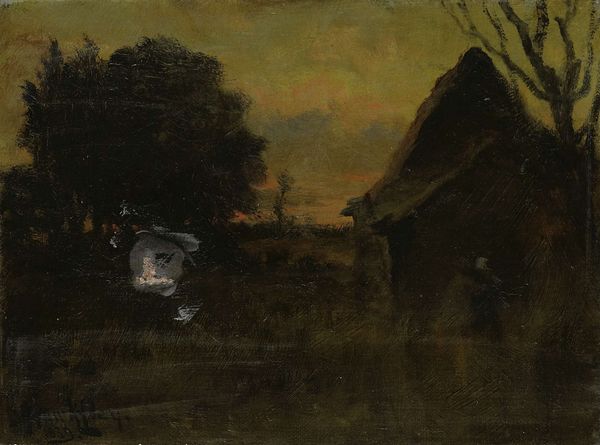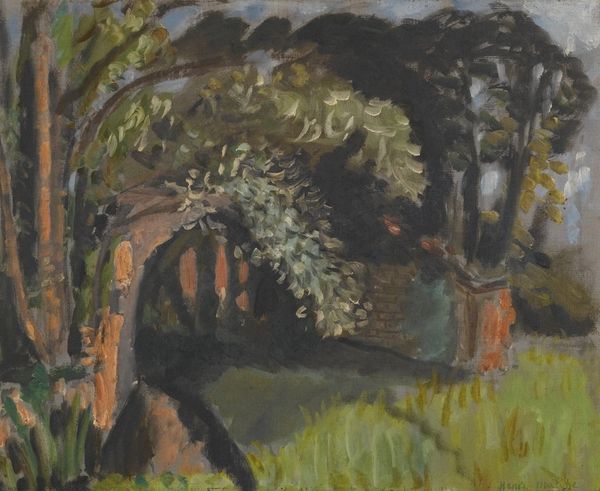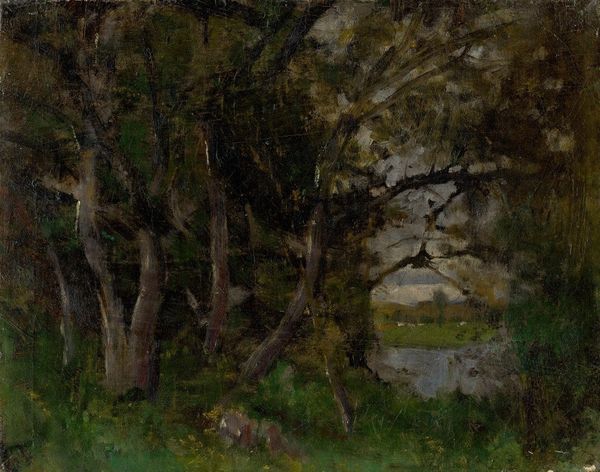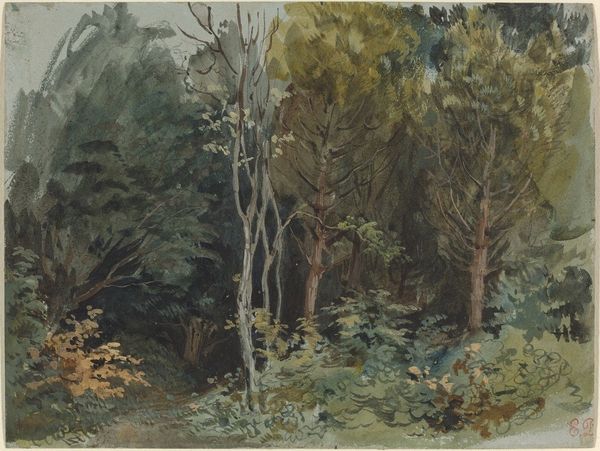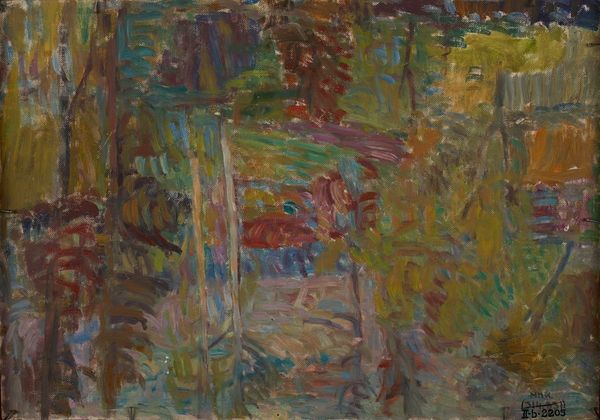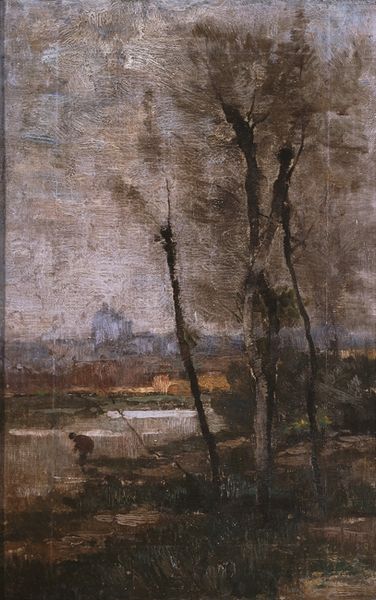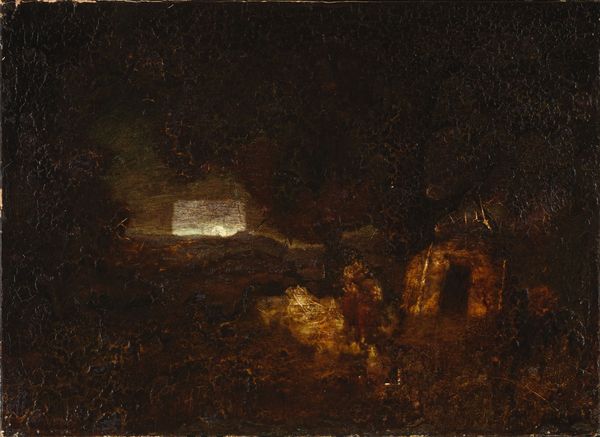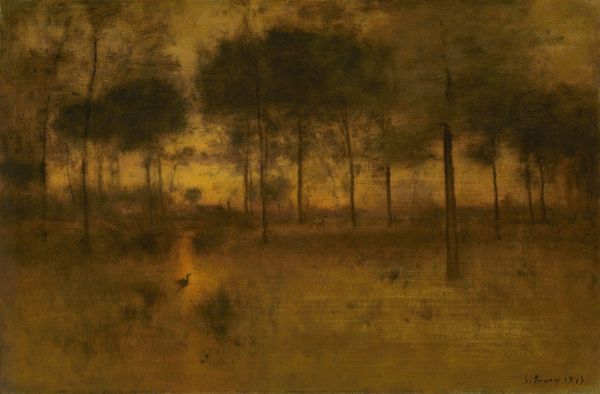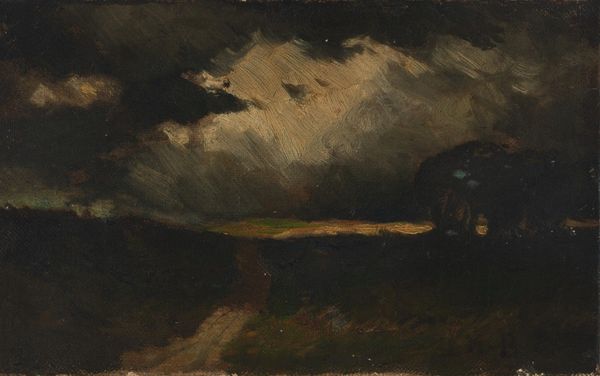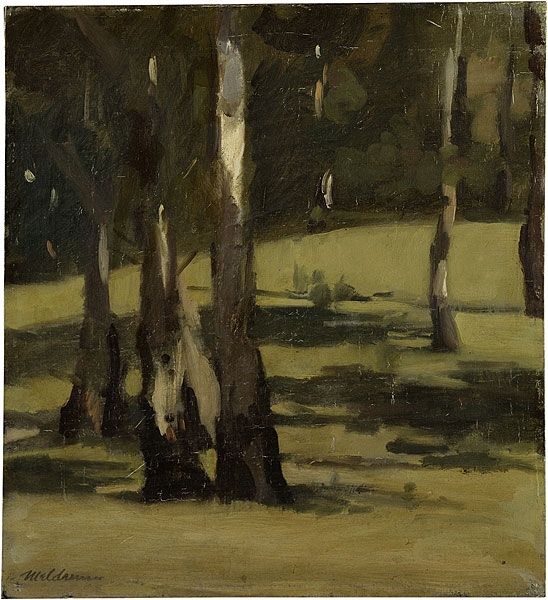
Copyright: Public Domain: Artvee
Editor: This is Ladislav Mednyánszky’s oil painting, "In the Garden at the Table", from around 1900 to 1910. The scene feels enclosed, almost secretive, shrouded in deep greens. What draws your attention in this composition? Curator: Primarily, the interplay between the indistinct and the articulated. Observe how the background dissolves into an atmospheric haze, a consequence of layering and impasto, contrasting with the more defined shapes in the foreground. The structure reveals a tension between the romantic impulse toward sublime obfuscation, versus a realist’s eye recording detail. Editor: I see what you mean about the tension. Is that darkness intended to evoke a specific feeling, do you think? Curator: The use of chiaroscuro, while subtle, directs our gaze. Light isn't merely illuminating, it's structuring space, guiding the eye through varying densities of pigment. Consider the semiotic weight of those dabs of red amidst the green – focal points disrupt any singular reading. Is it purely representational, or are they signifiers, laden with concealed meaning? Editor: So you're saying that even something seemingly simple, like the placement of colors, plays a structural role? Curator: Precisely. And consider the materiality: the thick application of paint, its texture, isn't just mimetic; it's presentational. The paint itself declares its existence as substance, contributing to the work’s overall syntax. Do you find this to be an accurate analysis? Editor: Definitely. Thinking about it structurally, it reveals a whole new layer of intention beyond just what’s depicted. I’ll look more closely at the composition and textures now when I look at paintings. Curator: Indeed. Art lies in decoding visual relationships and material presences. I hope to have provided some helpful insights.
Comments
No comments
Be the first to comment and join the conversation on the ultimate creative platform.
